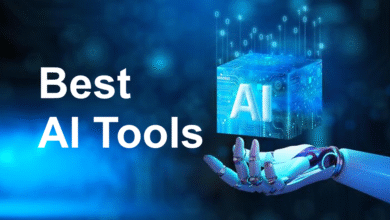5 Must-Have Smart Home Devices You Can Buy in 2025
Best smart home devices. Discover 5 cutting-edge AI-powered home automation gadgets revolutionizing convenience, security & energy efficiency.

Smart home devices in 2025 are revolutionizing modern living with cutting-edge technology that enhances convenience, security, and energy efficiency. As we move further into the digital age, these innovative gadgets are becoming more intuitive, seamlessly integrating into our daily routines. Whether you want to automate household tasks, improve security, or optimize energy consumption, the latest smart home advancements offer unparalleled benefits.
The year 2025 brings a new wave of AI-powered smart home devices that learn from your habits, anticipate your needs, and provide effortless control. From voice-activated assistants to self-adjusting thermostats, these devices are designed to make homes smarter and lives easier. In this guide, we’ll explore the top five must-have smart home devices of 2025 each offering next-level automation, enhanced security, and energy-saving features that redefine modern living.
5 Must-Have Smart Home Devices You Can Buy in 2025
AI-Powered Smart Hub
A smart hub acts as the central control unit for all your connected devices, and in 2025, these hubs have become smarter than ever. The latest models feature advanced AI algorithms that learn your habits, predict your needs, and automate routines without manual input. Brands like Amazon, Google, and Apple have introduced next-gen hubs with enhanced voice recognition, faster processing speeds, and seamless multi-device integration. These AI-powered hubs can now control everything from smart lights to security cameras with just a voice command. Some even come with built-in energy monitoring, helping you reduce electricity consumption.
Self-Learning Thermostats
Gone are the days of manually adjusting your thermostat. The self-learning thermostats of 2025 use machine learning to understand your schedule and preferences, automatically optimizing temperature settings for comfort and efficiency. Brands like Nest and Ecobee have introduced models with improved sensors, geofencing, and weather adaptation, ensuring your home is always at the perfect temperature. These smart thermostats integrate with HVAC systems and smart vents to distribute air evenly, reducing energy waste. They also provide detailed energy reports, helping you track usage and cut costs.
Advanced Security Cameras with Facial Recognition
Home security has reached new heights with AI-driven security cameras that offer real-time facial recognition, package detection, and intelligent alerts. The latest models in 2025 come with 4K resolution, night vision, and two-way audio, ensuring crystal-clear monitoring day and night. Brands like Arlo, Ring, and Google Nest have incorporated advanced motion tracking, reducing false alarms caused by pets or moving shadows. These smart cameras integrate with smart locks and alarm systems, allowing you to take immediate action if an intruder is detected. Some even feature local storage options to avoid cloud subscription fees.
Robotic Vacuum Cleaners with AI Mapping
Cleaning your home has never been easier, thanks to next-gen robotic vacuums equipped with AI mapping and self-emptying bins. The 2025 models from brands like iRobot, Roborock, and Samsung feature LIDAR navigation, multi-floor mapping, and voice control compatibility, allowing them to clean efficiently without human intervention. These smart vacuums can differentiate between hard floors and carpets, adjusting suction power accordingly. Some even include mopping functions for a deep clean. With automatic dirt disposal, you won’t have to empty the bin for weeks.
Smart Lighting Systems with Mood Detection
Intelligent Ambient Adaptation
2025’s smart lighting systems go beyond simple automation, featuring Artificial intelligence powered mood detection that analyzes your activities, time of day, and even biometric signals to create the perfect ambiance. These systems sync with wearable devices and smart home hubs to adjust lighting based on whether you’re working, relaxing, or entertaining guests.
Seamless Ecosystem Integration
Modern mood lighting seamlessly integrates with voice assistants, Security systems, and entertainment setups to create immersive experiences. Imagine your lights automatically dimming when you start a movie or flashing red when your smart doorbell detects a visitor. The latest Matter-compatible systems ensure flawless communication between devices from different manufacturers, eliminating compatibility headaches.
Health and Wellness Optimization
These cutting-edge systems now incorporate circadian rhythm lighting that mimics natural sunlight patterns to regulate sleep cycles and improve mental health. Special blue light reduction modes activate during evening hours, while energizing daylight spectra help combat seasonal affective disorder. Some models even track your sleep patterns and adjust nighttime illumination accordingly, working in tandem with your smart mattress or sleep tracker for comprehensive wellness support.
Challenges of 5 Must-Have Smart Home Devices in 2025
High Initial Cost
While 2025 smart home devices offer cutting-edge features, their premium pricing remains a barrier for many consumers. Advanced AI-powered hubs, self-learning thermostats, and facial recognition cameras require significant investment. Additionally, frequent software updates and hardware upgrades may lead to recurring expenses, making long-term ownership costly.
Data Security Risks
As devices become smarter, they collect vast amounts of personal data, raising concerns about hacking and unauthorized access. Despite encryption and biometric security, vulnerabilities in cloud storage and IoT networks persist. Users must constantly monitor permissions and updates to prevent data breaches.
Fragmentation Issues
With multiple brands offering proprietary ecosystems, device interoperability remains a challenge. While Matter Protocol aims to unify smart home tech, some older devices may not integrate smoothly. Consumers often face difficulties when mixing products from Google, Apple, Amazon, and other manufacturers.
Reliance on Stable Internet Connectivity
Most smart home devices depend on Wi-Fi or cloud services to function optimally. Power outages, weak signals, or server downtimes can disrupt automation, rendering devices temporarily useless. This reliance makes offline functionality a critical yet often overlooked feature.
Complexity in Setup
Despite claims of plug-and-play convenience, many AI-driven devices require technical expertise for optimal performance. Calibration issues, firmware bugs, and network configuration problems can frustrate users. Regular maintenance and troubleshooting add to the complexity, making smart homes less accessible for non-tech-savvy individuals.
E-Waste Concerns
The rapid evolution of smart home tech leads to shorter device lifespans, contributing to electronic waste. Many gadgets use non-replaceable batteries or proprietary components, making repairs difficult. Sustainable disposal and recycling options remain limited, raising ecological concerns.
Reduced User Control
While AI automation enhances convenience, excessive reliance on machine learning can lead to unpredictable behavior. Users may find certain automated decisions inconvenient or overly restrictive, requiring frequent manual overrides. Striking a balance between smart automation and user control remains an ongoing challenge.
Read More: How AI is Transforming Hiring: The Rise of Smart Interview Platforms
Conclusion
Smart home devices in 2025 have transformed modern living, offering unprecedented levels of convenience, efficiency, and security. From intelligent hubs that centralize control to self-learning thermostats that optimize energy use, these innovations are making homes more responsive to our needs than ever before. As technology continues to evolve, these devices are becoming essential for anyone looking to create a truly connected and automated living space.
Investing in these must-have smart home devices ensures you stay ahead of the curve, enjoying the benefits of a seamless, energy-efficient, and secure home. Whether you’re tech-savvy or simply looking to simplify daily tasks, the smart home advancements of 2025 provide practical solutions that enhance every aspect of modern life. The future of home automation is here embrace it and experience the difference firsthand.
What makes 2025 smart home devices better than previous models?
2025’s smart home devices feature advanced AI learning, seamless Matter protocol integration, and enhanced energy efficiency, making them more intuitive and interconnected than ever before.
Are these smart home devices compatible with older systems?
Most 2025 models offer backward compatibility with popular ecosystems like Google Home, Alexa, and Apple HomeKit, though some cutting-edge features may require newer infrastructure.
How secure are 2025’s smart home devices from hacking?
Manufacturers now implement biometric authentication, blockchain encryption, and regular firmware updates to create the most secure smart home networks to date.
Do these devices require professional installation?
While many 2025 smart home products feature DIY-friendly installation, complex systems like whole-home automation may benefit from professional setup for optimal performance.
What’s the expected lifespan of 2025 smart home devices?
With modular designs and upgradeable components, today’s premium smart home devices are built to last 5-7 years before needing replacement or major updates.











